Foraging in the height of summer
In the height of summer the fresh green shoots of spring and early sumer have become leggy and tough, the elderflowers have faded and the autumn berries are yet to appear so you may feel there is little to forage in July and early August. Luckily there is still plenty to find if you know where to look - here are some of our top summer wild foods:-
Meadowsweet (Filipendula ulmaria)
When the elderflowers have faded luckily the meadowsweet flowers begin to open. These tall, honey-scented flowers grow in damp meadows, riversides and ditches across much of the UK. The foamy, white flowers can be used in the same way as elderflowers - cordials, jellies, sorbet, infusions, wines and syrups. Be careful though as meadowsweet contains salicylic acid (the pain killing compound in aspirin) which can thin the blood so best avoided if you have a history of internal bleeding or are taking blood thinning medication such as warfarin.
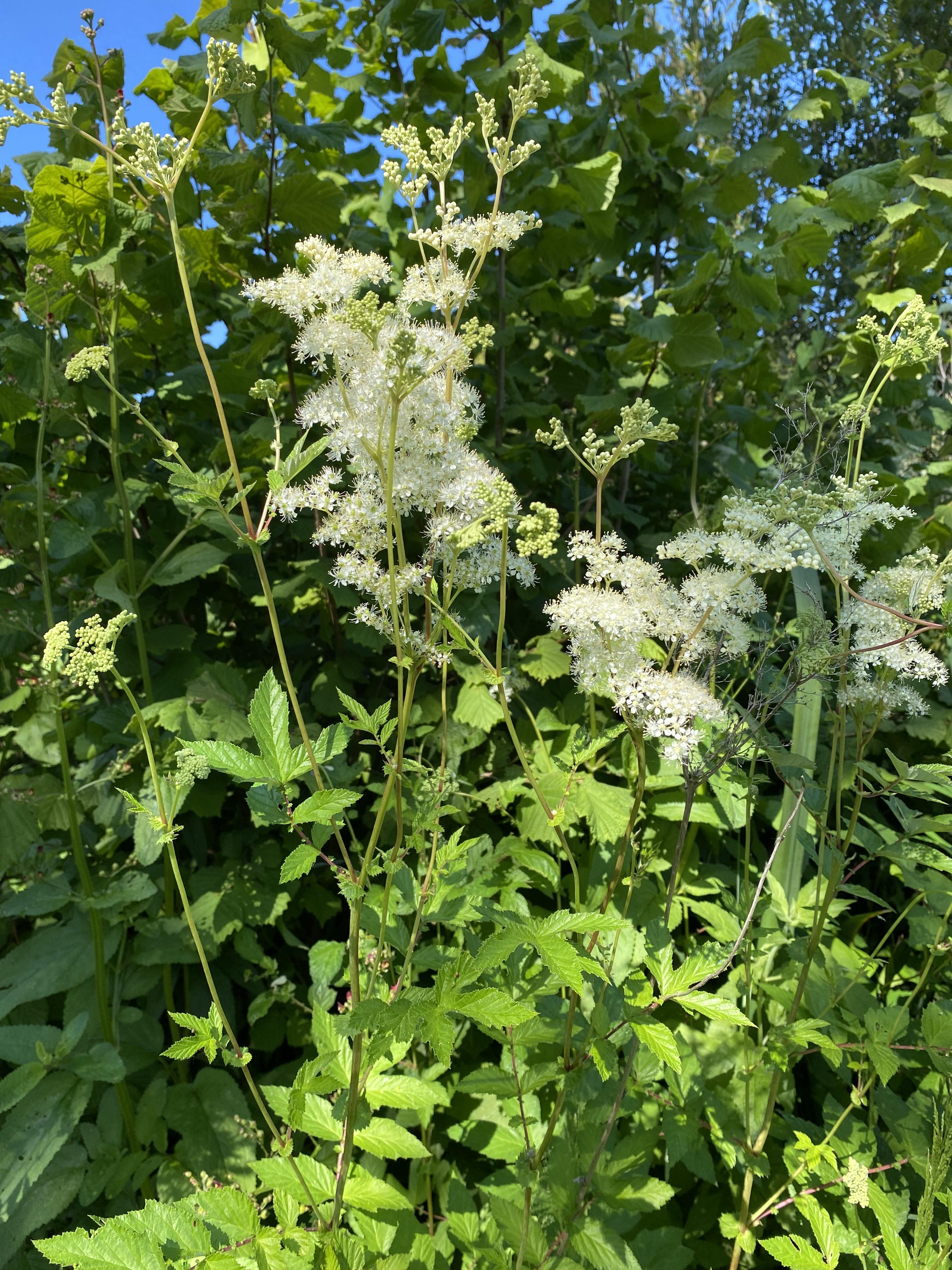
Chanterelles (Cantharellus cibarius)
If we have had some wet weather the first flush of Chanterelles may appear bringing a smile to any forager's face. These delicious, apricot scented "golden nugget' mushrooms like to grow in damp, slightly shady places near silver birch, oak or pine trees. Their sunshine yellow colour plus their fruity smell are two of the key identification points, however, turn them over and if the gills look less like normal mushroom gills and more like ridges then you have definitely found chanterelles. The white flesh inside is another key feature. The delicate flavour of chanterelles mean they are great with scrambled eggs or chicken - they get lost wtih stronger flavours or in mixed mushroom dishes such as soup.
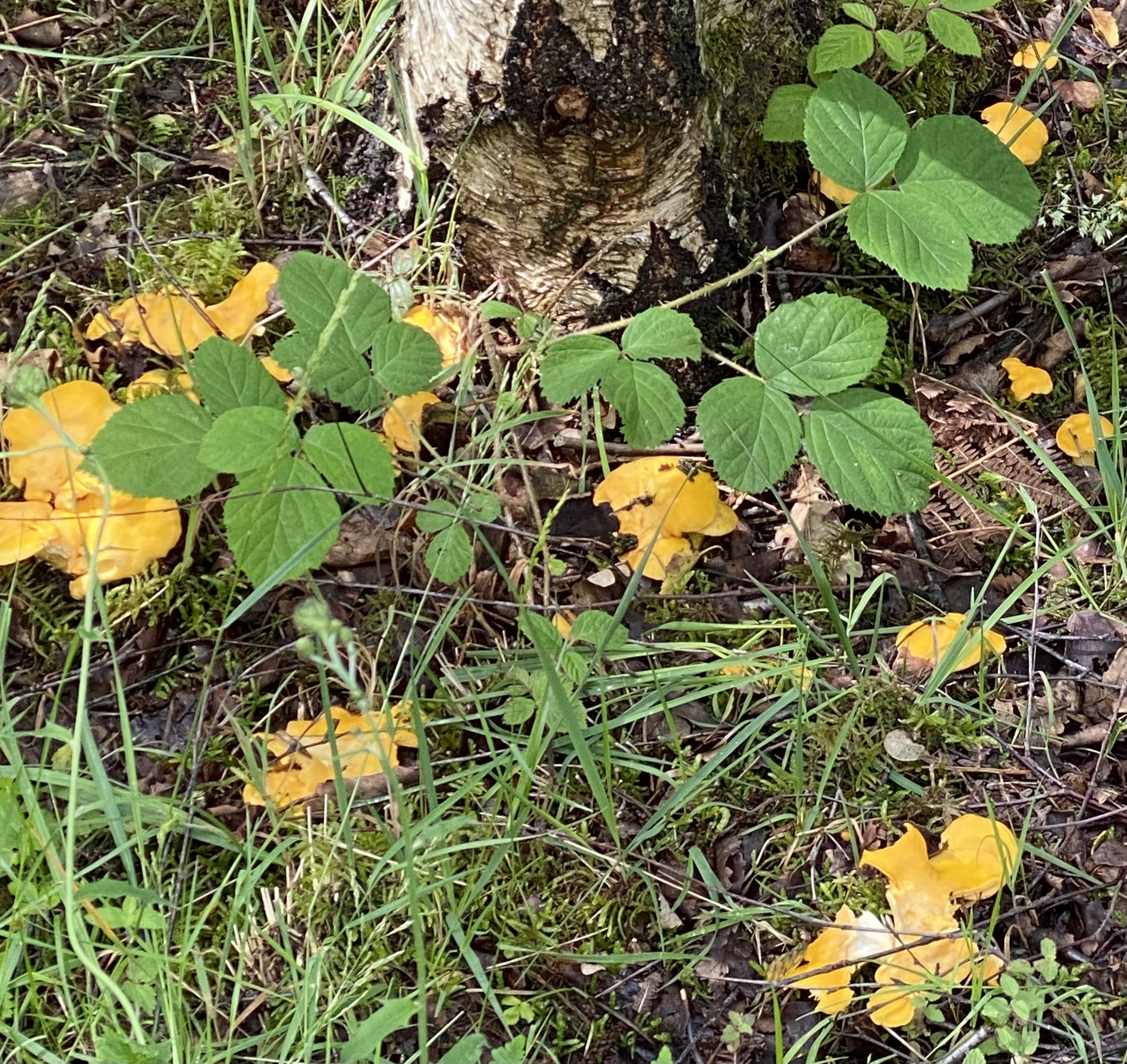
Stinging nettle seeds (Urtica dioica)
Stinging nettles are incredibly nutritious plants (see the Stinging Nettles page on our website - http://www.wildseasonsforaging.co.uk/wild-foods1/stinging-nettle) and this includes the seeds (see below). You are looking for handing tassel-like flower heads that are absolutely covered in tiny, green seeds). Harvest them carefully using gloves or scissors and then remove the seeds from the "tassels". These can be dried and stored for months - add them to salads, cereals, muffins or smoothies for a super boost of vitamins, minerals and protein. Be careful not to get stung while you are harvesting but the seeds don't have the stinging hairs so can be eaten raw without worrying.
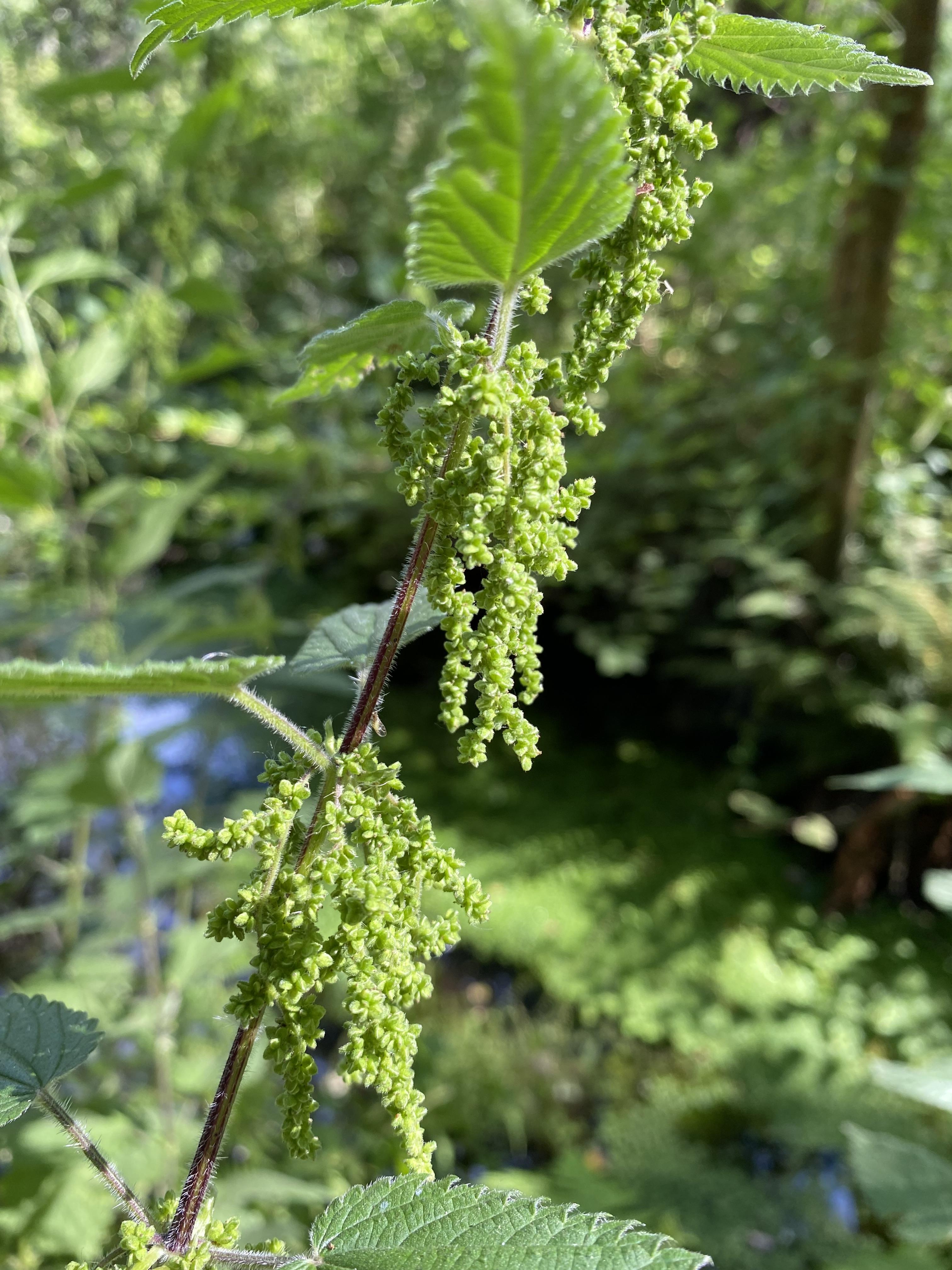
Yarrow (Alchillea millefolium)
Yarrow is a traditional herbal medicine that has been used for centuries in teas and balms. It was used to treat wounds, cuts and grazes and was reputedly used to treat Achilles during the Trojan War hence its name Achillea. The flower heads have a sweet earthy scent that can be used to make syrups and decorate salads. The leaves also have an earthy, herbal flavour which goes well in salads, soups, stews and stuffings or it can be steamed and eaten as a side dish.
A tea made from the leaves with added lemon and sugar or honey has long been a popular soothing drink. It has tradionally been used to treat colds and calm hormones.
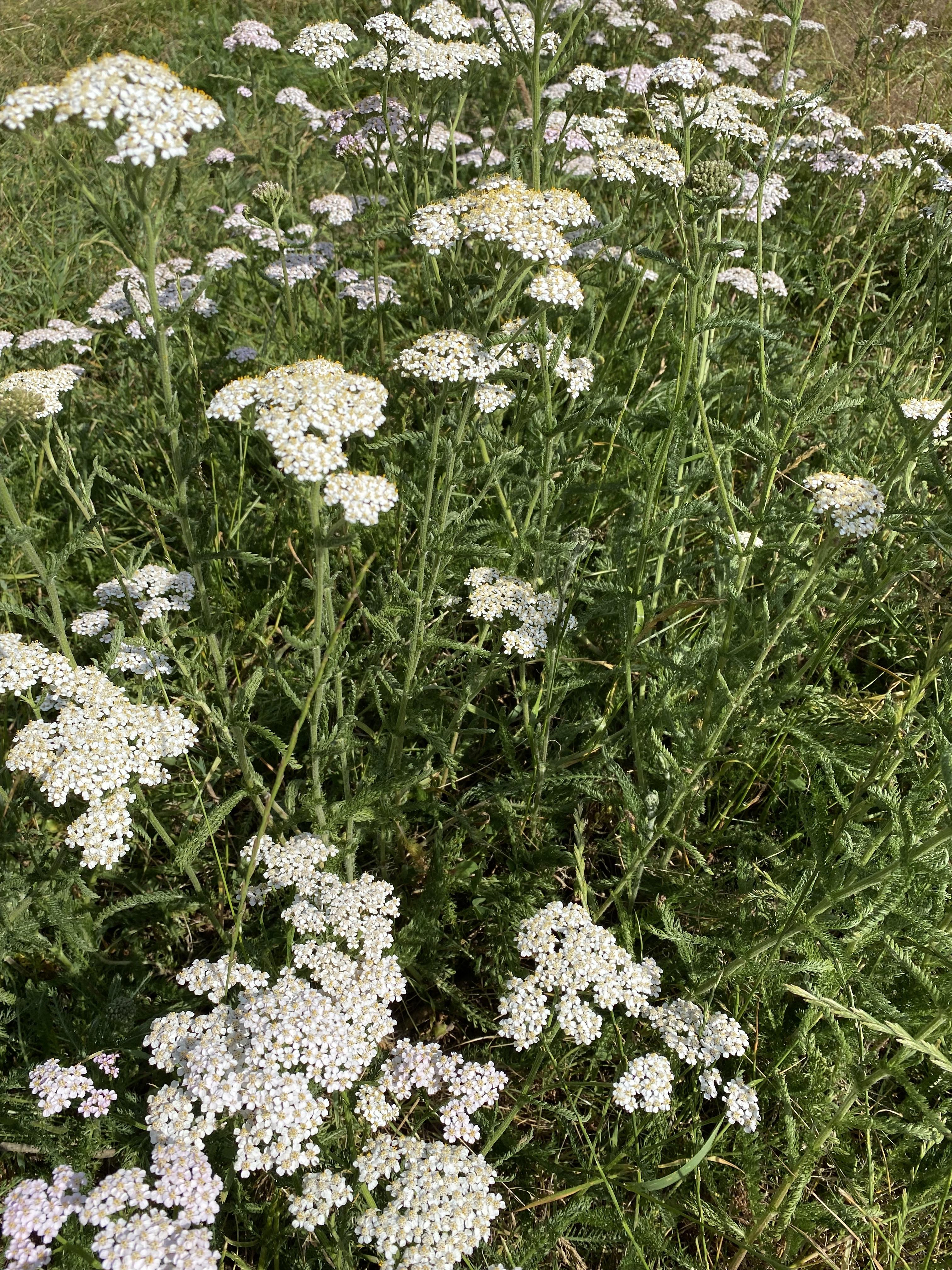
Oyster mushrooms (Pleurotus sp. )
These delicious fungi grow on the fallen, dead tree trunks of beech trees and grow from summer to autumn in flushes - loads appearing in one burst and then shrivelling up as they age. The cap in a cream / beige / grey colour with creamy / beige gills. The flesh is white and has a pleasant mushroomy seafood scent. If you do a spore print (leave one gill side down on a piece of white paper overnight) you will see the spores are a lilac / purple colour. Remove the tough stems and saute in butter or vegan spread until the mushrooms are well cooked and crisping round the edges - yummy! They can be used in any mixed mushroom dish and go well with stronger flavoured seafood.
Be careful though - if they are pure white with white gills and a white sport print then leave them alone. They are likely to be the deadly poisonous Angel's Wings.

Branching oyster mushroom (Pleurotus cornuncopiae)
Bilberries (Vaccinium myrtillus)
These tough, evergreen shrubs are related to blueberries and their juicy purple berries have a very similar flavour. Much loved by children and dogs, bilberries are easy to pick and make a fun and handy snack on woodland walks. If you manage to get home without them all being eaten, bilberries make a lovely tart.
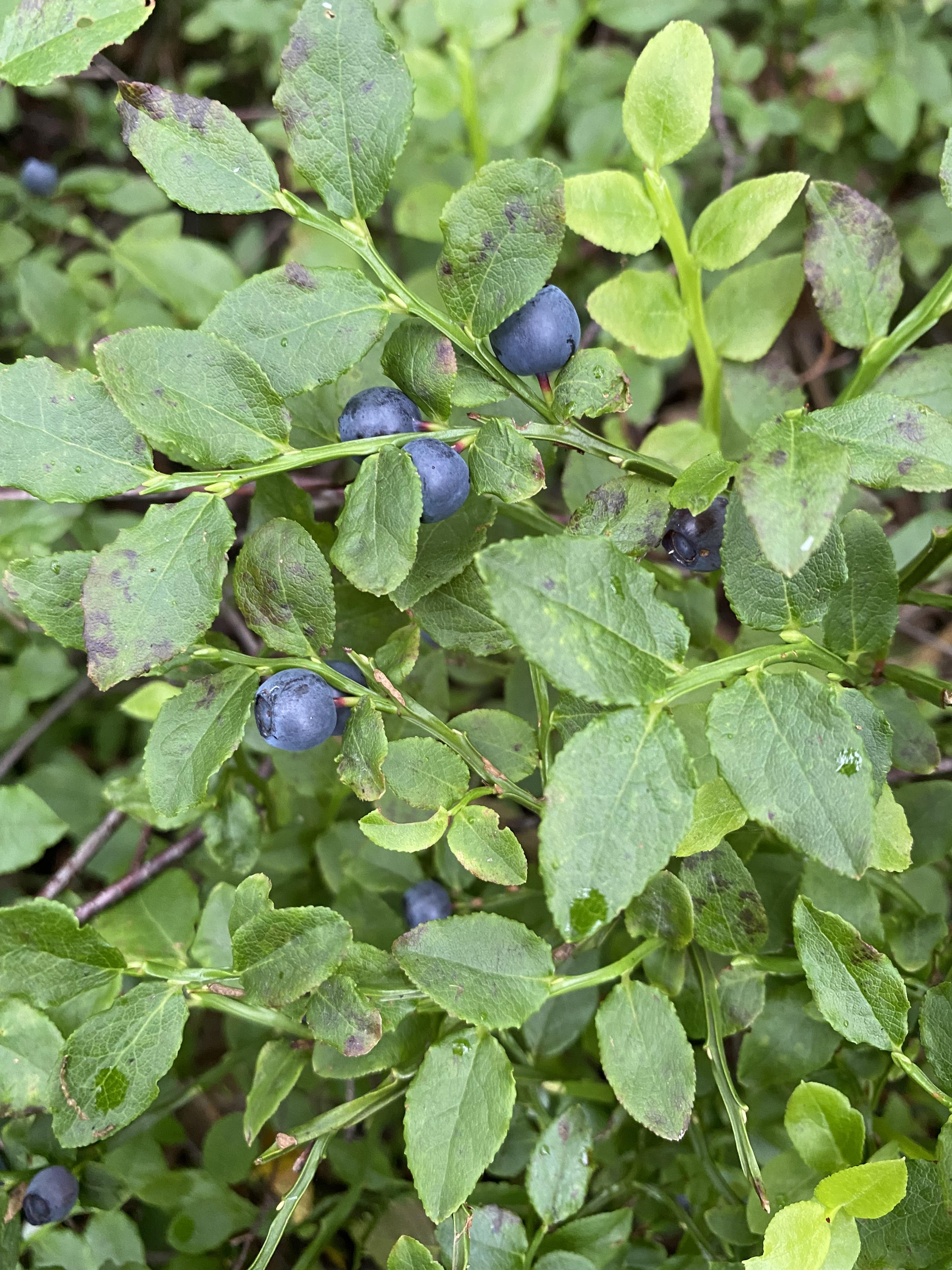
So don't let the dry weather and the crispy brown lawns put you off foraging - there is still plenty to find out there.
Meadowsweet (Filipendula ulmaria)
When the elderflowers have faded luckily the meadowsweet flowers begin to open. These tall, honey-scented flowers grow in damp meadows, riversides and ditches across much of the UK. The foamy, white flowers can be used in the same way as elderflowers - cordials, jellies, sorbet, infusions, wines and syrups. Be careful though as meadowsweet contains salicylic acid (the pain killing compound in aspirin) which can thin the blood so best avoided if you have a history of internal bleeding or are taking blood thinning medication such as warfarin.
Chanterelles (Cantharellus cibarius)
If we have had some wet weather the first flush of Chanterelles may appear bringing a smile to any forager's face. These delicious, apricot scented "golden nugget' mushrooms like to grow in damp, slightly shady places near silver birch, oak or pine trees. Their sunshine yellow colour plus their fruity smell are two of the key identification points, however, turn them over and if the gills look less like normal mushroom gills and more like ridges then you have definitely found chanterelles. The white flesh inside is another key feature. The delicate flavour of chanterelles mean they are great with scrambled eggs or chicken - they get lost wtih stronger flavours or in mixed mushroom dishes such as soup.
Stinging nettle seeds (Urtica dioica)
Stinging nettles are incredibly nutritious plants (see the Stinging Nettles page on our website - http://www.wildseasonsforaging.co.uk/wild-foods1/stinging-nettle) and this includes the seeds (see below). You are looking for handing tassel-like flower heads that are absolutely covered in tiny, green seeds). Harvest them carefully using gloves or scissors and then remove the seeds from the "tassels". These can be dried and stored for months - add them to salads, cereals, muffins or smoothies for a super boost of vitamins, minerals and protein. Be careful not to get stung while you are harvesting but the seeds don't have the stinging hairs so can be eaten raw without worrying.
Yarrow (Alchillea millefolium)
Yarrow is a traditional herbal medicine that has been used for centuries in teas and balms. It was used to treat wounds, cuts and grazes and was reputedly used to treat Achilles during the Trojan War hence its name Achillea. The flower heads have a sweet earthy scent that can be used to make syrups and decorate salads. The leaves also have an earthy, herbal flavour which goes well in salads, soups, stews and stuffings or it can be steamed and eaten as a side dish.
A tea made from the leaves with added lemon and sugar or honey has long been a popular soothing drink. It has tradionally been used to treat colds and calm hormones.
Oyster mushrooms (Pleurotus sp. )
These delicious fungi grow on the fallen, dead tree trunks of beech trees and grow from summer to autumn in flushes - loads appearing in one burst and then shrivelling up as they age. The cap in a cream / beige / grey colour with creamy / beige gills. The flesh is white and has a pleasant mushroomy seafood scent. If you do a spore print (leave one gill side down on a piece of white paper overnight) you will see the spores are a lilac / purple colour. Remove the tough stems and saute in butter or vegan spread until the mushrooms are well cooked and crisping round the edges - yummy! They can be used in any mixed mushroom dish and go well with stronger flavoured seafood.
Be careful though - if they are pure white with white gills and a white sport print then leave them alone. They are likely to be the deadly poisonous Angel's Wings.
Branching oyster mushroom (Pleurotus cornuncopiae)
These tough, evergreen shrubs are related to blueberries and their juicy purple berries have a very similar flavour. Much loved by children and dogs, bilberries are easy to pick and make a fun and handy snack on woodland walks. If you manage to get home without them all being eaten, bilberries make a lovely tart.
So don't let the dry weather and the crispy brown lawns put you off foraging - there is still plenty to find out there.